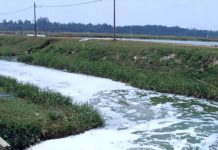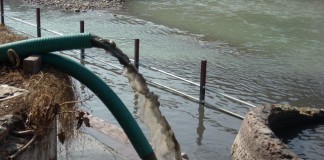Latest research on archaeological sites of the ancient Indus Civilisation, which stretched across what is now Pakistan and northwest India during the Bronze Age, has revealed that domesticated rice farming in South Asia began far earlier than previously believed, and may have developed in tandem with – rather than as a result of – rice domestication in China.
The research also confirms that Indus populations were the earliest people to use complex multi-cropping strategies across both seasons, growing foods during summer (rice, millets and beans) and winter (wheat, barley and pulses), which required different watering regimes. The findings suggest a network of regional farmers supplied assorted produce to the markets of the civilisation’s ancient cities.

Evidence for very early rice use has been known from the site of Lahuradewa in the central Ganges basin, but it has long been thought that domesticated rice agriculture didn’t reach South Asia until towards the end of the Indus era, when the wetland rice arrived from China around 2000 BC. Researchers found evidence of domesticated rice in South Asia as much as 430 years earlier.
The new research is published today in the journals Antiquity and Journal of Archaeological Science by researchers from the University of Cambridge’s Division of Archaeology, in collaboration with colleagues at Banaras Hindu University and the University of Oxford.
“While wetland rice is more productive, and took over to a large extent when introduced from China, our findings appear to show there was already a long-held and sustainable culture of rice production in India as a widespread summer addition to the winter cropping during the Indus civilisation.”
Suggested read: Previously thought age of Earth turns out to be wrong – It had to
While they don’t yet know what crops were being consumed at Rakhigarhi, Jennifer Bates points out that: “It is certainly possible that a sustainable food economy across the Indus zone was achieved through growing a diverse range of crops, with choice being influenced by local conditions.
“It is also possible that there was trade and exchange in staple crops between populations living in different regions, though this is an idea that remains to be tested.”
“Such a diverse system was probably well suited to mitigating risk from shifts in climate,” adds Cameron Petrie. “It may be that some of today’s farming monocultures could learn from the local crop diversity of the Indus people 4,000 years ago.”
Source http://www.pasthorizonspr.com/index.php/archives/11/2016/rice-farming-in-india-older-than-thought





































